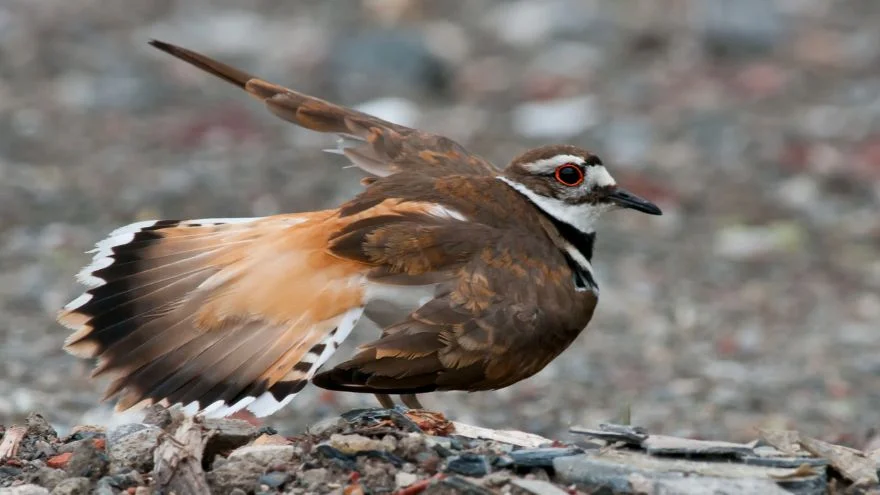Multiple instances exist of how the smartest animals have shown their intelligence to the world.
An example is the famous story of Otto the Octopus, who figured out how to short circuit Germany’s Sea Star Aquarium electricity.[1]
But while marveling instances like these exist, stark instances of an extreme level of dumbness displayed by the least intelligent animals also exist in great detail.
This is why we have compiled and ranked the dumbest animals in the world and also reveal the clever details behind their actions.
The Dumbest Animals in the World Ranked (and Why they’re Actually Smart)
20. Fulmar
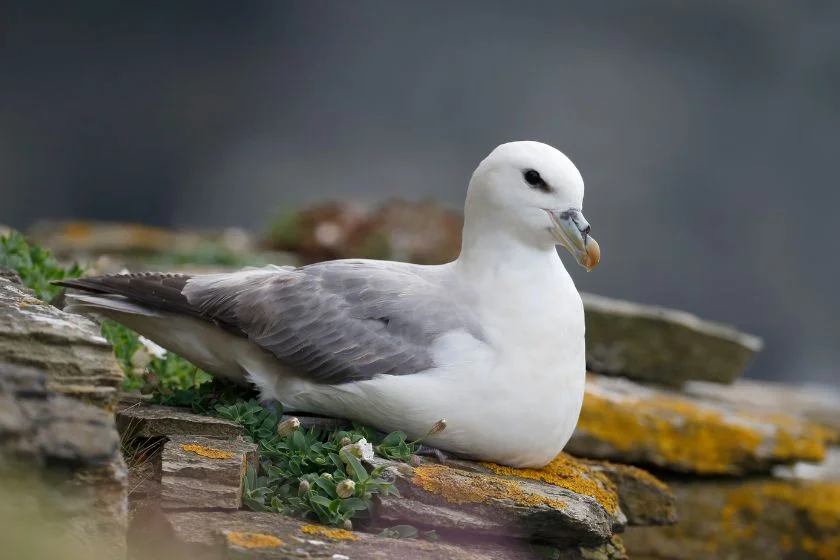
- Scientific Name: Procellaria glacialis (Northern), Fulmarus glacialoides (Southern)
- Range: Coasts of England, Northern France
- Habitat: Cliffs by the ocean
- Diet: Fish, squid, shrimp, carrion, refuse, plankton, jellyfish.
- Conservation Status: Least Concern
For most animals, maternal instincts are one feisty attribute they possess, and no matter the threat, compromise is never considered.
However, for the Fulmar, on the surface, it seems the aves are bad parents.
After birthing their eggs, often on cliffs, far from the reach of predators (a smart move for a nonchalant parent), they seem never to care enough to return to their children.
The helpless chicks thus sit in their nest on the cliffs overlooking the North Atlantic and North Pacific oceans, at the mercy of any environmental disaster and tenacious predators.
The fulmar chick would only return to feed its young ones and its single egg. Other than that, its chicks are at the mercy of the unexpected.
Despite being a nonchalant and negligent parent, the fulmar chicks comfortably abandon her young ones mainly because she is assured of their safety, at least to a considerable extent.
The stomach of the young chicks is biologically engineered with a section called the proventriculus, which contains deadly oils that can be vomited once they feel threatened.
Once this oil gets on predators, specifically birds, getting it off is impossible, and it further takes away an essential functionality key to their survival; their ability to fly.
For non-avian predators, the young chicks can smell them from a great distance, thus eliminating the element of surprise, a key predatory tactic of such hunters like the Fox.
19. Jerboa

- Scientific Name: Allactaga tetradactyla
- Range: Northern Africa, West Asia
- Habitat: Dry Deserts (Arid Sandy Habitats), Salt Marshes
- Diet: Plants, Seed, Insects
- Conservation Status: Endangered
The Jerboa is best described as a rodent, but not your average-looking rat.
These bipedal creatures look like rats but have tiny legs that give them the ability to hop, just like a kangaroo.
Imagine a rat with the incredible sprinting ability and the ability to hop, thus evading predators.
While Jerboas are biologically hardwired for the harsh life of living in nature’s free world, their dumb nature becomes glaring by their inability to master effectively how to make excellent use of their hind legs.
What good are legs reminiscent of that of the Flash if you never can make use of it?
The Jerboa can take as much as 11 weeks to master how to use its hind legs effectively.
For those familiar with how merciless nature is to the slow and slack, 11 weeks is a really long time to learn how to survive.
But when they do master how well to navigate the inner biological workings of their hind legs, it is indeed a lovely sight.
Watching these rodents run as fast as 15 mph and hopping and jumping over obstacles while evading predators is a delight.
18. Flamingo
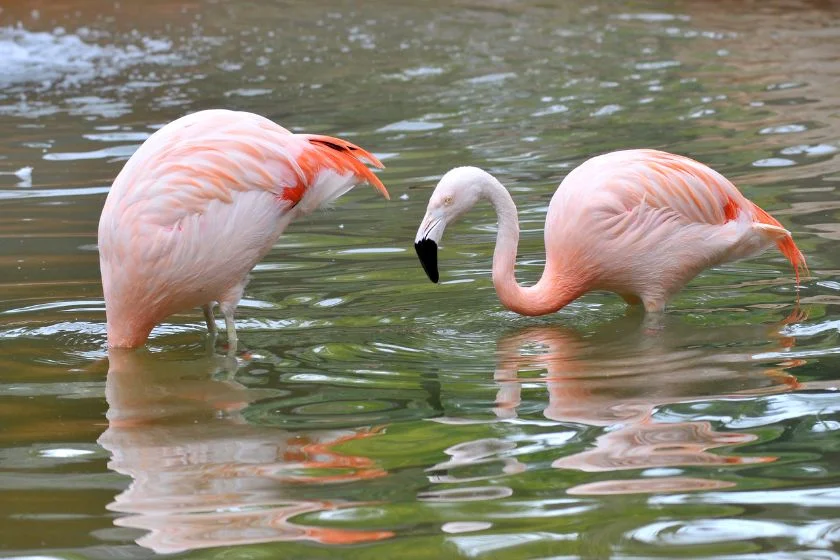
- Scientific Name: Phoenicopterus roseus
- Range: South American, Caribbean, Middle East, Africa, Galapagos Islands
- Habitat: Saline lakes, Estuarine Lagoons
- Diet: Algae, small crustaceans, fly larvae
- Conservation Status: Least Concern
A group of flamingos (called flamboyance) would strike an amazing impression on you, especially when witnessed in person.
Now undoubtedly, it boasts of two beautiful slender legs that when it stands on one, you can’t help but think of a ballerina adorned in her pink tutu.
But then, the flamingo takes it to the extreme. However, for all the grandeur, majestic beauty, and bloom of the flamingo, it still acts super dumb.
The stunning beauty stands on one leg for most of the time and can even sleep while standing on one leg.
Now the science folk gives a perfect excuse as to why it seems logical for the flamingo to sleep while standing on one leg, but it sure would be more comfortable to sleep while standing on two legs or while not standing at all.
Aside from sleeping while standing, the flamingo fishes with its beak upside down.
Yes, it thrusts its beak upside down while fishing. We can’t imagine how effective that is, but they do survive, so we bet it works out fine.
While it seems odd, they are filter feeders, and their tongue serves as a sieve for filtering food. So it’s not all that dumb. But it is.
17. Cane Toad
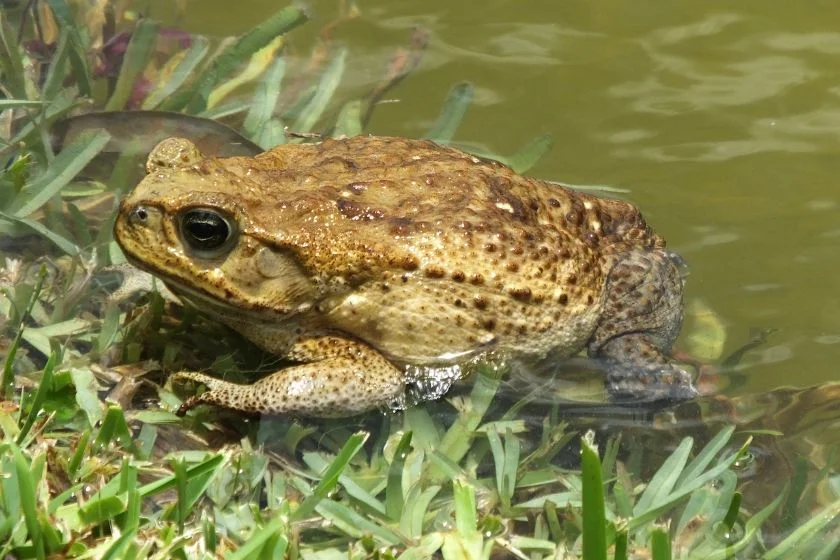
- Scientific Name: Rhinella marina
- Range: South American Amazon Basin, Rio Grande Valley, Texas,
- Habitat: Coastal Grassland, Beach Dunes, Mangroves, Rain Forests, Swamps,
- Diet: Vegetation, Snakes, lizards, frogs, insects, small mammals
- Conservation Status: Least Concern
Few animals receive so much vitriol and are considered a nuisance and invasive as much as the Cane Toad.
Considering the prevalence of myths about these creatures, as well as the fact that their females are incredibly fertile, their negative perception is not surprising.
Native to the Americas, Cane Toads were introduced to Australia in 1935 to eliminate the cane beetle but moved from a population of 102 in 1935 to 1.5 billion today.
(They never solved the Cane Beetle problem) But why these animals are hated has to do with how poisonous they are.
Cane Toads are incredibly dumb such that they would eat just about anything, including dog food.
Everything is on the menu for them. But then, while they pick on anything to eat, they sometimes end up being food for others, but then they get the last laugh, figuratively.
As a result of the toxins released in their parotic gland, predators who eat cane toads, such as crocodiles, end up dying.
This is, in fact, the major reason why they are hated, as they exploded their population in Australia but reduced the population of native wildlife.
Cane Toads may be dumb, but they sure know how to survive.
16. Emu
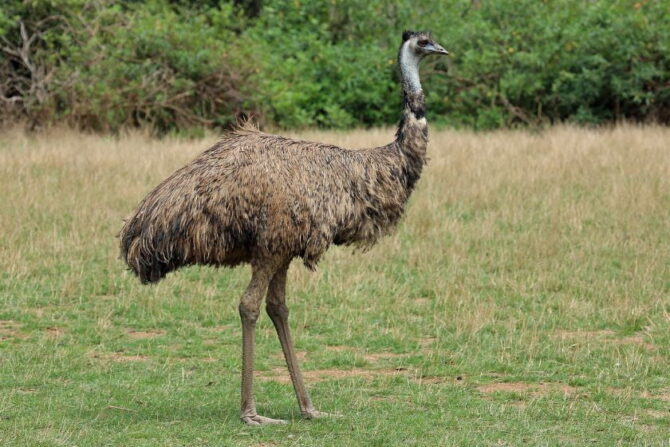
- Scientific Name: Dromaius novaehollandiae
- Range: Tasmanian, King Island, Kangaroo Island
- Habitat: Eucalyptus forest, sand plains, desert shrubland, woodland.
- Diet: Seed, fruits, flower, young shoot, insect, small vertebrae
- Conservation Status: Least Concern
Possibly, being dumb is one physiological nature of giant birds. Emus, the second largest living bird by height, have a reputation for being very dumb.
Even scientists agree that Emus, the National bird of Australia, are stupid. Unlike other avians, Emus lack a single iota of adaptable traits, which is key to survival.
When introduced to new situations, the Emu lacks the ability to adapt or teach themselves how to go about the situation.
Despite the noise they make, nothing seems to be taken into their heads. Emus are indeed classic instances of empty barrels making the loudest noise.
In fact, when the term “bird brain” is used, it is mostly a reference to the Emu. But despite how stupid they are, they are excellent evaders of deadly weapons such as bullets.
Yes, the stupid Emu can evade being killed by bullets. Major G. P. W. Meredith, commander of the Royal Australian Artillery, who led a plot to annihilate Emus shortly after World War II for disrupting crops, can attest to this.
Despite being armed with Lewis Machine Guns, and firing thousands of rounds of bullets, less than a dozen Emus were killed.
These birds boast terrible survival skills but have top-rated survival instincts.
15. Goblin Shark

- Scientific Name: Mitsukurina owstoni
- Range: Deep Ocean (at least 4265 feet)
- Habitat: Atlantic Ocean, Pacific Ocean, Indian Ocean
- Diet: Dragonfish, rattails, crustaceans, cephalopods
- Conservation Status: Least Concern
Of the vast majorly of the weird-looking fearsome fishes in the ocean, the goblin fish cuts an odd figure.
Rarely seen and only known to those fascinated by marine life, goblin sharks look scary, but their extreme naïveté makes them almost harmless.
For decades, they have been isolated to the deepest and darkest parts of the ocean, and that isolation has had a huge toll on their intellects, making them dumb.
Unlike other marine life, Goblin Sharks seem to be totally ignorant of scientists who approach them and make no effort to get away.
In a bid to study them, scientists have tried to move goblin sharks, but it was discovered that they survived only in the darkest depths of marine existence.
Now while this may have alluded to biological factors, the fact that the goblin shark has lost every predatory instinct its marine counterparts are known for is often blamed on its own laziness and isolation.
14. Panda

- Scientific Name: Ailuropoda melanoleuca
- Range: Central China
- Habitat: Mountain Forest with dense bamboo stands
- Diet: Bamboo stem, shoots, leaves
- Conservation Status: Vulnerable
A top contestant for the most beautiful animal on the planet, what Pandas have in aesthetics, they lack in mental exertion.
Cute looking, beloved, admired, and dear to all humans, one resounding fact about Pandas that people never seem to care about (possibly looks over sense) is that they are dumb.
Despite having a digestive system that the scientific community agrees is better suited for digesting meat and not in any way ideal for bamboo leaves, the panda seems never to get that.
It has indecipherable chemistry with bamboo shoots, despite being a carnivore.
The dumb nature of the panda is not limited to its diet but extends to its maternal instincts.
Pandas sometimes kill their young ones, albeit unintentionally, and in rare instances where twins are birthed in the wild, only one survives, and the weaker one is left to starve to death.
When in captivity, they seem to lose every form of interest in reproduction, and thus humans have to step in to ensure the survival of the species. How tiring.
13. Wild Turkey

- Scientific Name: Meleagris gallopavo
- Range: North America
- Habitat: Grasslands, Swamps, Forest floor
- Diet: Seed, Grain,
- Conservation Status: Not Extinct
The extent of the dumb nature of wild Turkey is one that possibly would get you dazed, as it seems majorly inconceivable for animals to display this extent of naivety.
You feast on them, especially during festive periods, and considering that Benjamin Franklin hailed them as “Birds of Courage,” you may wonder how the connection between courage and stupidity is drawn.
In normal times, turkeys come off as tough and smart, but once the heavenly floodgates burst open, these creatures seem to be beguiled.
Whether amused by the possibility of water dripping from the heavens, the turkey would fall into a trance as it stares heavenwards while it rains.
With mouths agape, these birds stare for as long as 30 minutes, and even when drowning, they never seem to break free from their inept trance.
Science seems to have narrowed this unusual behavior to a genetic defect known as genetic torticollar.
Male turkeys also have an odd sexual perversion that sees them copulate with the dismembered heads of their female counterparts.
12. Japanese Land Snail
- Scientific Name: Ezohelix gainesi
- Range: Japan
- Habitat: Wetlands, river banks, gardens
- Diet: Leaves, stems, fruits, plant crops
There exist numerous species of snails, each with different behavioral traits.
But often, one universal trait common to all snails is the innate act of slipping into their shells at the slightest hint of danger.
However, there are exceptions to this, and at the fore of this exception is the Japanese Land Snail.
Even while in the face of danger and threat, the Japanese Land Snail would never retreat to the safety of its shell, preferring to confront threats head-on.
For one of the slowest creatures on the planet, this is amusingly dumb, as they stand little to no chance.
But then, while they embark on a stupid mission that is all but assured to succeed, they don’t go to battle armless.
Science has revealed that these snails possess the remarkable ability to sling their shells at an angle of 180 degrees.
This is astounding as it is effective in knocking off its common predator, the beetle.
While it would be wiser and much safer for the Japanese Land Snail to retreat to the safety of its shells and opt to sling shells only in extremely deadly instances, we see the creative ability of the snail despite its dumb behavior.
11. Chameleon

- Scientific Name: Chamaeleonidae
- Range: Africa
- Habitat: Rainforests, Deserts
- Diet: Crickets, mantids, locusts, grasshoppers
- Conservation Status: Least Concern
They are indeed creatures that inspire wonderment. When we witness their amazing ability to change color in person, we are awed.
But the reality is that despite how intelligent chameleons seem to be, it has a trait of dumbness. This ingenious little beauty enjoys sunbathing but sometimes takes it to the extreme.
The chameleon enjoys the warmth of the sun so much that it sometimes gets itself burnt.
This is by no accident, as they enjoy being in the sun to the extent that they don’t mind the hurt of the burn. But that hurt sometimes leads to their death.
10. Kakapo
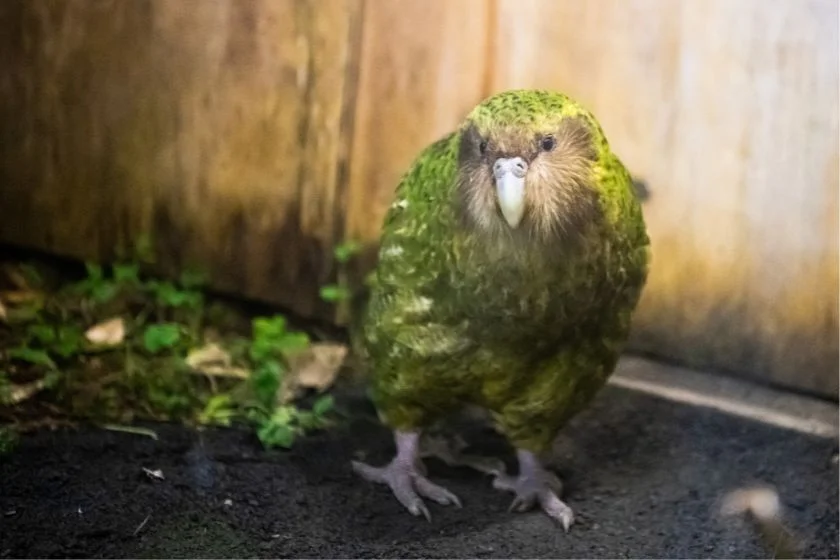
- Scientific Name: Strigops habroptilus
- Range: New Zealand
- Habitat: Forest, herb fields, tussock grassland
- Diet: Orchard tubers, juicy supplejack vines, fruit from the tips of high rimu branches
- Conservation Status: Critically Endangered
Of the numerous titles the Kakapo holds, such as the world’s heaviest bird and the world’s only flightless parrot, none strongly reflects its dumb nature than its title as the world’s most useless bird.
Despite possessing the ability to walk and run swiftly, the Kakapo seems to forget this fact, even when its life is in danger.
When attacked by predators, most animals’ survival instincts would kick in and cause them to flee.
However, with the Kakapo, it is amusingly different. In the face of danger, these birds assume a stationary position, not even blinking, fixed in a single spot, making them an easy meal for predators.
It is thus not surprising that they cannot thrive in the wild, and as such, they are critically endangered, with only less than 200 of the species in existence.
Another reason why the Kakapo joins the dumbest animals list is its mating call.
While other animals embrace the task of wooing females for mating, the Kakapo does the same, but with annoying loud boom calls and displays known as leks.
And interestingly, mating is the only time male and female kakapos meet. But while they may be stupid, few animals can compete with them in aesthetics.
Kakapos boast of a really lovely smell, can dance and sing well (in their own way), and boast of a long lifespan.
9. Koala

- Scientific Name: Phascolarctos cinereus
- Range: Australia
- Habitat: Woodlands, open forest
- Diet: eucalyptus leaves, bloodwood trees leaves, brush box
- Conservation Status: Vulnerable
The feelings Australians have for the Cane Toad are in direct contrast to what they have for the koala.
They are abundant in Australia and have been endeared to Australians that they are seen as the symbol of the country’s wildlife.
But while koala gets so much endearing treatment, it is pretty stupid. And it is no fault of theirs. They have one of the smallest brain-to-body mass ratios for mammals.
The dumb nature of the koala becomes evident in its diet. Despite having a digestive system with four stomachs not suitable for eucalyptus leaves, the koala goes on to eat them and, in fact, any other leaf.
The koala is also unhygienic and is infected with Chlamydia, a sexually transmitted disease. Now you are spooked.
But then, while this may be the case, it is not bad news for them and you, of course.
Koalas still survive with this STD and cannot infect humans except in absolutely unlikely circumstances (say, a koala urinates on you).
While it may seem that they eat just about anything, the koala assesses the nutritional value of leaves before eating. No wonder they consume diets that will kill other mammals.
8. Sloths
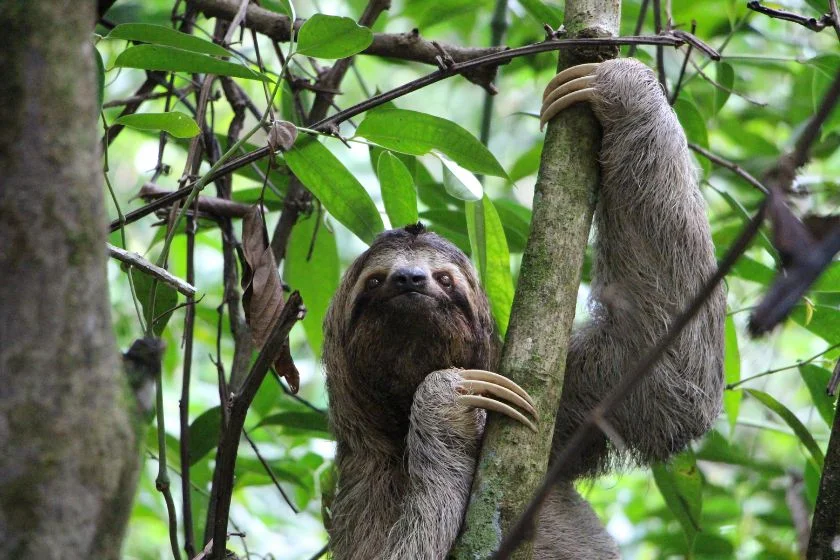
- Scientific Name: Choloepus hoffmanni, Bradypus variegatus
- Range: Panama, Southern Andes of Venezuela
- Habitat: Tropical Rainforest
- Diet: Leaves, twigs, buds
- Conservation Status: Least Concern
Hollywood sold you a lie with Sid the Sloth! Now, while there exist elements of truth with Sid the Sloth, it’s entirely not true.
Sloths are not often in the habit of using their brains even slightly. The creatures are one of the laziest you will ever find in nature.
They spend about 8 to 10 hours every day sleeping and are secluded to the heights of tall tree branches.
They only return to the ground once every eight days to defecate. Yes, the sloth has a bathroom break scheduled for once every eight days.
Now the dumb nature of these lazy animals becomes evident on the return trip from their bathroom breaks.
Sometimes while crawling back to the high tops of the branches for another round of soothing rest, the sloth can slip and die.
Another dumb nature of the sloth is the fact that it’s never in a hurry. A sloth would slowly drag itself to its destination irrespective of the danger close by.
This may seem dumb, and it is, but then on a closer look, it isn’t exactly dumb. The sloth’s slow movement is, in fact, a survival strategy.
The animal has poor eyesight, a low energy budget, little muscle mass, and low metabolism; as such, it makes sense for their movement to be so slow to survive.
But while they may lack the ability to evade danger swiftly, they adopt their perfect hiding technique, the use of camouflage which is very effective in the wild.
7. Norway Lemming
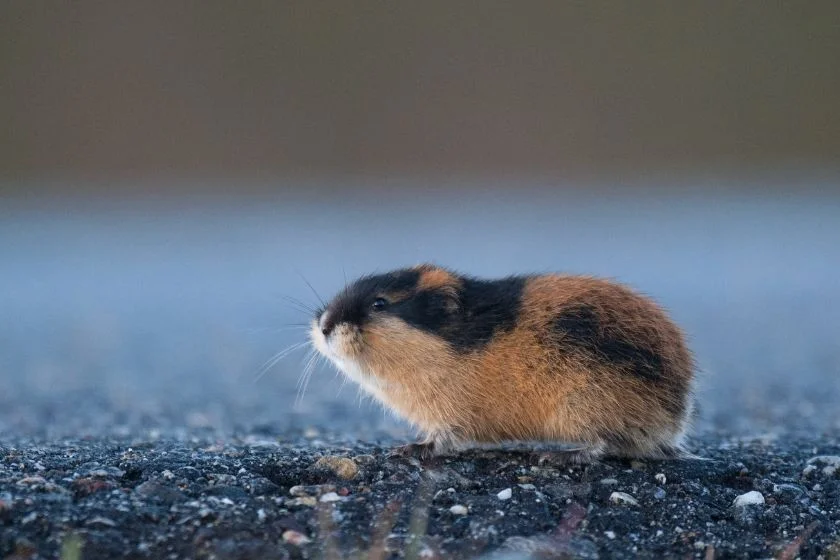
- Scientific Name: Lemmus lemmus
- Range: Temperate and polar regions of North America and Eurasia,
- Habitat: Tundra and fells
- Diet: Moss, sedges, grasses
- Conservation Status: Least Concern
We have nothing against the Norwegian Lemming, and if not for its inflated view of itself, it would never appear on our list.
Most animals who have appeared on our list have a peculiar behavior unique to their nature that invariably makes them stupid.
But for the Norwegian Lemming, it’s hard to tell if it’s them being naturally stupid or good ol’ fashion overconfidence.
In the wild, knowing what fight to pick and one to avoid is integral to survival, but the Norwegian Lemming seems never to get that.
The animal would attack other wild animals far bigger than it. And it doesn’t help that the most powerful arsenal they have, is their teeth, which requires them to have close contact with their opponents.
It is not hard to imagine the fight going sideways and obviously not in favor of the Norwegian Lemming.
This classic foolish instance of the Napoleon complex in the Norwegian Lemming makes it incredibly stupid.
While they are dumb, they sometimes pull clever tricks. One of such is adapting their coloration to fit the background of their surroundings which makes them very unnoticeable.
6. Slow Loris
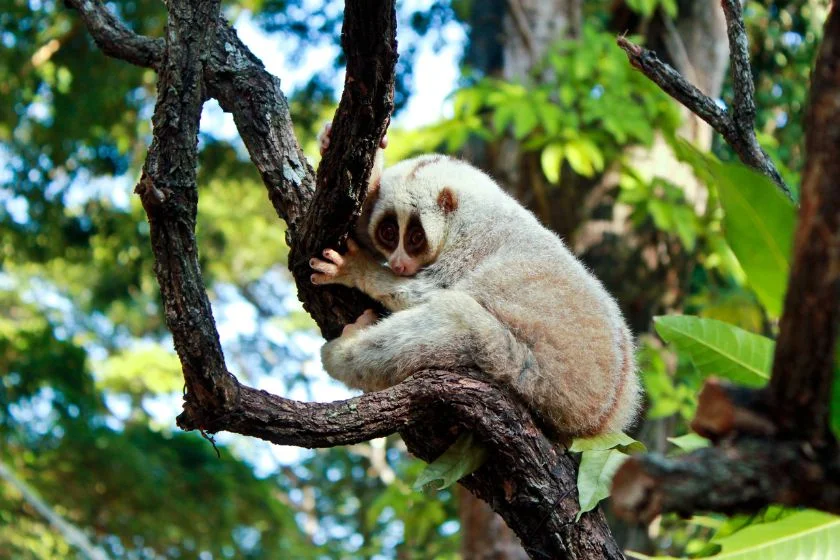
- Scientific Name: Tardigradus coucang
- Range: South and Southeast Asia
- Habitat: Tropical rainforests, evergreen forests
- Diet: Insects, small birds, nectar, fruits, gums, reptiles, eggs, arthropods, miscellaneous vegetation
- Conservation Status: Endangered
With adorable wide, mushy eyes, the slow loris is also quite dumb. But its dumb nature emanates from naivety.
But then, while it’s naive, other creatures need to tread cautiously, particularly humans.
Unlike other animals who retreat once they sight humans, slow loris would walk up to humans.
Humans who are totally unaware of the capabilities of the slow loris would thus embrace these mammals and their friendly gestures.
The slow loris naivety in walking up to humans can get it killed as we never can tell the intentions of everyone.
But even in its naivety, it possesses a potent weapon that it deploys to protect itself.
The dumb, slow loris is one of the very few mammals who boast of venoms capable of killing humans.
Even when you are all friendly to them and present no threat to them, they can still bite. Their bite can cause anaphylactic shock and result in death if not treated.
5. Horned Lizard

- Scientific Name: Phrynosoma cornutum
- Range: South – Central United States, Northern Mexico
- Habitat: Desert or semi-arid environment
- Diet: Spider, sowbugs, ants
- Conservation Status: Least Concern
In a similar fashion to the slow loris, the horned lizard is one creature that is seemingly unbothered by human presence.
In the search for food, horned lizards would befriend even the most hostile human, and that is not exactly a good thing.
In cases where horned lizards have befriended the right person, they have ended up as pets and have been well domesticated.
However, they often end up in the wrong hands and join a large number of snatched wildlife that form the blizzard and unethical world of the global underground pet trade.
Now their dumb nature may not have a huge consequence as most animals on the list, but befriending humans is not exactly an ideal level of smartness.
While they are too trusting and gullible, horned lizards have some fine tricks up their sleeve.
They possess the ability to camouflage their presence and also squirt blood from their eyes, which is an excellent tactic at confusing predators and discouraging them as the blood tastes awful.
4. Komodo Dragon
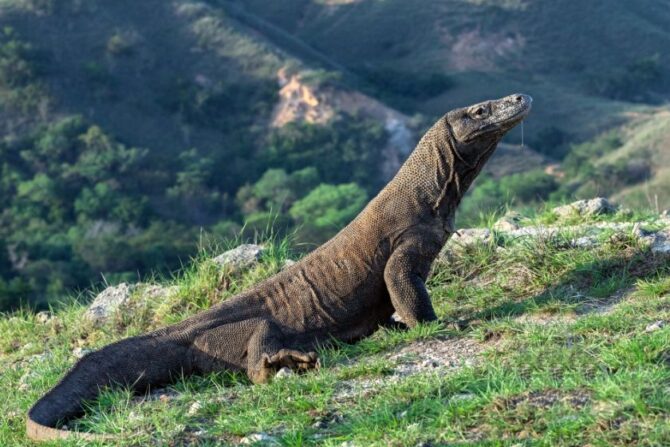
- Scientific Name: Varanus komodoensis
- Range: Indonesian Islands
- Habitat: tropical savanna forests
- Diet: Meats, large water Buffalo, small rodents
- Conservation Status: Endangered
When food becomes so much of a priority that you begin thinking with the stomach rather than with the brain, the result is the behavior of the Komodo Dragon.
These carnivores hunt down prey, and while that is fine and normal, what is odd is how they go about eating.
Komodo dragons take in huge chunks of meat at a time that they have trouble swallowing.
The Komodo Dragon enters a head-butting contest with trees to force food down its throat. They hit their heads at top speed against trees, which can’t be good for them.
The dumb thing is the fact that they can easily swallow these meats at a single time, yet they consistently take in a large chunk of food they never can swallow without the routine head-butting contest.
While they may be dumb, they have good mouth hygiene as they clean their mouths with leaves and lick their lips after eating.
3. Ostrich
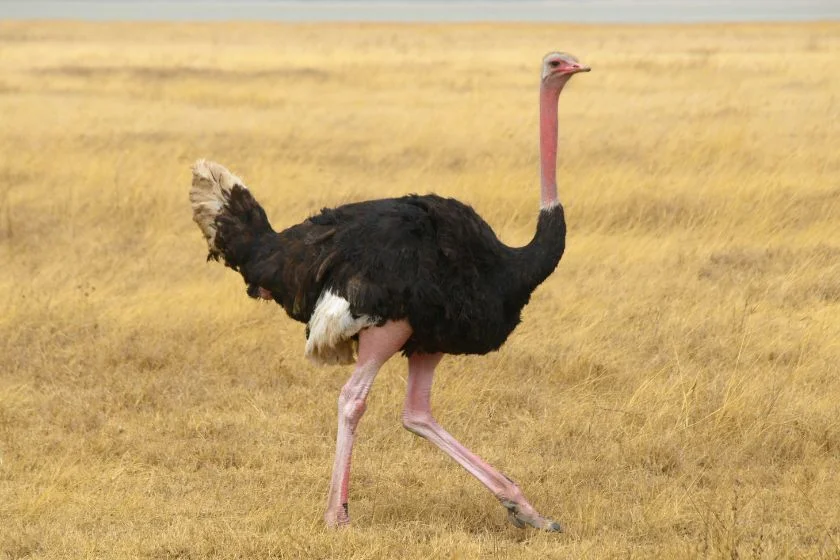
- Scientific Name: Struthio camelus
- Range: Africa
- Habitat: Savannah, Sahel
- Diet: Plants, roots, seeds, lizards, insects
- Conservation Status: Least Concern
Ordinarily, the ostrich would not make our list. We have too much respect for the ferocious flightless bird to disrespect it with the title of being dumb.
But the ostrich’s behavior leads us to conclude that it is indeed one of the dumbest birds in the world.
Though they boast of a reasonable level of smartness, the ostrich’s dumb nature becomes evident in rare instances of extreme threat.
Usually, the ostrich would fight, but sometimes when it dawns on it that the fight is far above its abilities, it neither fights nor flees.
The ostrich would mimic pushing its head into the ground, closing its eyes, and going invisible. But the invisibility of the ostrich is only to itself and not to its opponents.
This extent of dumb behavior is quite amusingly considering that the ostrich is not entirely stupid.
Its slender legs present a formidable weapon. A powerful kick can knock down huge predators such as lions. It’s thus worth wondering why the ostrich would stupidly act invisible.
2. Secretary Bird
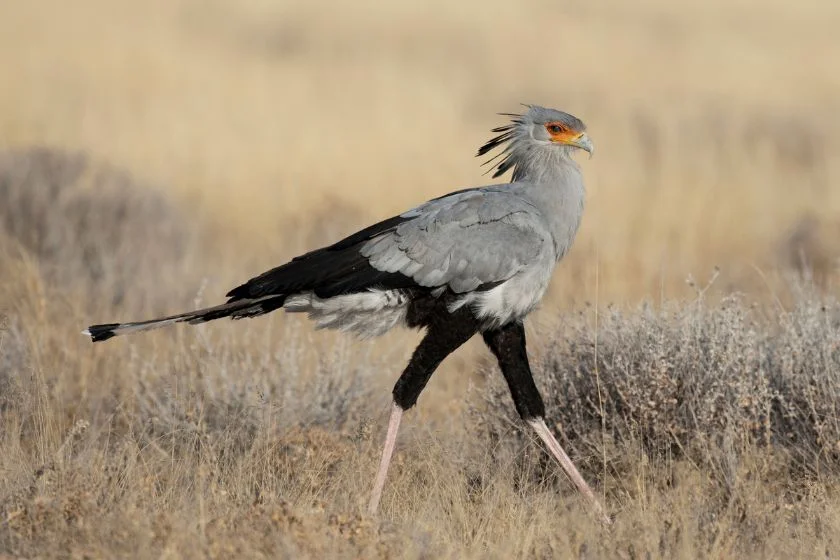
- Scientific Name: Sagittarius serpentarius
- Range: South of the Sahara Desert
- Habitat: Savannah, Scrubs, Grassland
- Diet: Small rodents, amphibians, reptiles
- Conservation Status: Endangered
There probably are flightless birds who wish they could fly, but the Secretary Bird mostly takes that special gift for granted.
Despite possessing the ability to glide through the sky, the secretary bird prefers to walk.
The bird opts to walk mostly to search for prey, which are mostly venomous. The stupidity of the secretary bird comes to the fore in how it goes about hunting its poisonous games.
In their hunts for poisonous snakes, the chances of them ending up as dinner is relatively high as they stomp on their prey, giving it the opening needed to pull off a strategic defense.
A poor hunting technique and outrightly stupid. The birds also have to eat their prey as soon as they kill it as they lack the firm grasp common to birds.
1. Killdeer
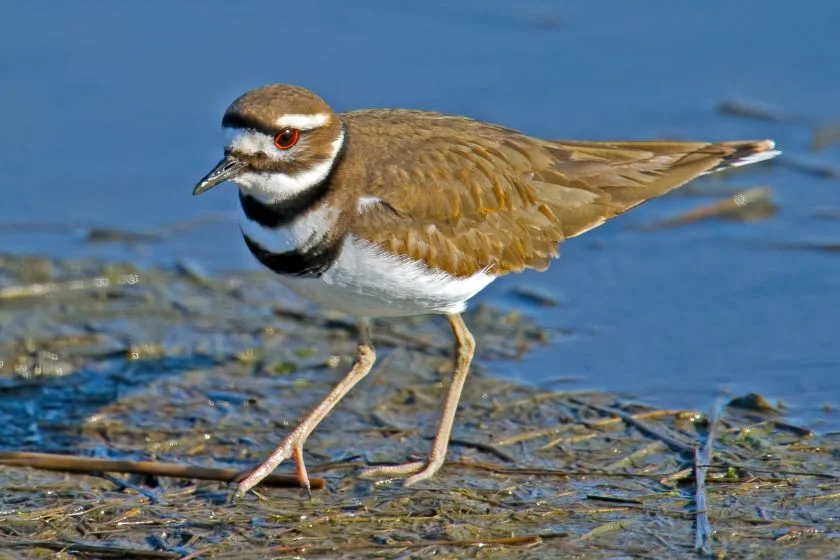
- Scientific Name: Charadrius vociferus
- Range: United States, Canada
- Habitat: Open grasslands, short grass prairies, pastures, croplands, wetlands, fields
- Diet: Insects
- Conservation Status: Least Concern
The killdeer tops our list as the dumbest animal in the world due to the robust survival shortcomings the birds make.
Despite being an excellent flyer, the killdeer makes astonishingly dumb choices in its lifestyle. The bird has its nest set up on the ground, which is easily accessible to predators.
They also are noisy, which does well to attract attention to them, especially those of predators. And rather than run from predators, they act all calm and wait to be a fancy meal. How dumb?
But as with most animals, they are not entirely stupid. When a predator approaches the nest, the killdeer pulls off one of its most ingenious tricks.
It feigns having a broken wing and moves away from the nest. This will thus distract the predator who soon follows after the broken-winged killdeer.
But as soon as the predator attempts to lunge for it, it flies away back to its nest. How cunning.
Conclusion
There you have it—the list of the dumbest animals on the planet.
Although these least intelligent animals display a befuddling level of stupidity, they also show a great deal of smart behavior that leaves us amazed.
While you take in this information and amuse yourself, do note that should you come across these animals in the wild, their behaviors are unpredictable; hence always be on guard.
